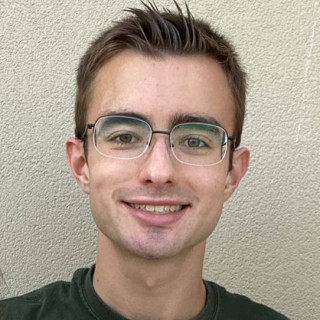For the first three years of medical school, I lived within an aura of willful ignorance. The 0% student loan interest rate and payment pause were my enablers, acting as signals from the government that borrowing was a justifiable means to an end. It seemed almost too easy: With the click of a button, tens of thousands of dollars were deposited into my bank account. I knew it wasn't free money, but it often felt that way. After all, everyone told me before medical school that physicians are well paid and to "take out as much as you need, you'll always be able to pay it back."
Then, the inevitable happened. Congress ended the payment pause, and I woke up on Sept. 2 with a student loan balance that was higher than the day before. Compound interest. Ballooning debt, a concept that was previously abstract for a young 25-year-old shielded by COVID-era measures. I pulled out my phone's calculator and muttered to myself, "Hmmm, well … this may be a bigger hole than I realized.” In less than a year I would be a physician, but still far from earning the salary that justified the debt I carried.
My story is not a unique one nor one worthy of much sympathy from my peers. Roughly 76% of MD students graduate with student loan debt, and that number is even higher for my colleagues attending an osteopathic medical school. Among medical students, the average loan debt exceeds $200,000 and continues to rise as more for-profit medical schools open their doors. For low-income students entering medicine, scholarships are few and far between. Institutional-based full tuition scholarships exist but tend to be offered only by prestigious medical schools with large endowments. Federal government scholarships are also available but come with many strings attached. Health Profession Scholarships from the military mean four years of military service, and the National Health Service Corps Scholarship requires long-term commitment to primary care in underserved areas. For the undifferentiated medical student, student loans are often the only palatable option.
The rising cost of medical school meant that many were watching the Supreme Court closely. The Supreme Court’s ruling that Biden’s $10,000 student loan forgiveness plan was unconstitutional was viewed by many as a disappointing end to COVID-era protections. It opened the door, however, to something new. Less than 10 days before the payment pause ended, the White House unveiled a new repayment plan. This repayment option, strategically named the Saving on a Valuable Education (SAVE) plan, works especially well for borrowers with high levels of debt and low-income earnings. Resident physicians are especially well positioned to take advantage of the plan.
With the new SAVE plan, monthly payments are capped at 10% of discretionary income (defined as any income earnings greater than 225% over the poverty line). This means a medical resident with a pretax annual salary of $60,000 will only have to pay approximately $227 a month, regardless of their level of debt burden. The SAVE plan also comes with a powerful caveat: Interest no longer compounds for borrowers that make monthly payments on time. This means $250,000 in debt will no longer balloon to $400,000 by the end of residency and fellowship training. Eliminating this threat of accumulating debt makes a much more significant impact than a one-time $10,000 student loan forgiveness.
The cost of medical education in the United States continues to rise, pricing many students out of an intrinsically meaningful profession. The SAVE plan is merely a Band-Aid solution to the ever-growing cost of medical education. It is, however, a particularly potent Band-Aid that allows young physicians the opportunity to focus on their future without languishing on an ever-increasing student loan burden. The payment pause may be over, but aspiring physicians like myself still have a reason to smile.
How has the student loan repayment pause/unpause affected you? Share in the comments.
Lachlan is a third-year medical student attending the USF Morsani College of Medicine. His interests include neurological research, medical humanities, and running. He was a 2022–2023 Doximity Op-Med Fellow, and continues as a 2023–2024 Doximity Op-Med Fellow.
Animation by Joseph Lee and Jennifer Bogartz






